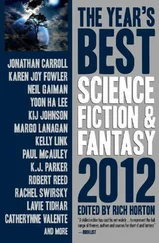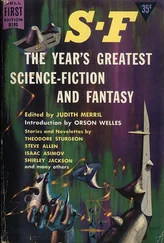“Here is the daylight I promised you. Did you ever see it at midnight before?”
“How do you know it is midnight? It looks more like a red sunset to me,” I said, for the sun was just in the horizon.
“The sun has just set, and is now rising. It did not go out of sight, but gradually turned about and began to mount again. That is how I know it is midnight.”
“Sunset presses so closely upon sunrise that night is crowded out altogether. Then this must be the land of the midnight sun that I have read about?”
“Yes, we are very near the Earth again, and this is far inside the arctic polar circle, where the sun never goes down during summer, but sets for a long night in the winter. I have kept far to the westward to avoid the magnetic pole, which might play havoc with my apparatus.”
“Then your little side-trip is—”
“To the North Pole, of course!” he cried triumphantly.
How simple this vexed problem had become, after all! It had worsted the most daring travellers of all countries for centuries. Thousands upon thousands spent in sending expeditions to find the Pole had only called for other thousands to fit out relief expeditions. Ship after ship had been crashed, life after life had been clutched in its icy hand! But now it had become an after-thought, a side-trip, a little excursion to be made while waiting for midnight! And it is often that such a simple solution of the most baffling difficulties is found at last.
The doctor had been observing his quadrant, and was now busy making calculations. He called me up to his compartment.
“Longitude, 144 degrees and 45 minutes west; Latitude, 89 degrees 59 minutes and 30 seconds north. That is the way it figures out. We were half a mile from the Pole when I took my observation. We must have just crossed over it since then.”
“Go down a little nearer, so we may see what it looks like!” I said excitedly.
“I dare not go too close to all that ice, or we may freeze the mercury in our thermometer and barometer. We must keep well in the sunlight, but I will lower a little.”
What mountains of crusted snow! What crags and peaks of solid ice! It was impossible to tell whether it was land or sea underneath. Judging by the general level it must have been a sea, but no water was visible in any direction. The great floes of ice were piled high upon each other. A million sharp, glittering edges formed ramparts in every direction to keep off the invader by land. How impotent and powerless man would be to scale these jagged walls or climb these towering mountains! How absolutely impossible to reach by land, how simple and easy to reach through the air! The North Pole and Aerial Navigation had been cousin problems that baffled man for so long, and their solution had come together.
“Empty a biscuit tin to contain this record, and we will toss it out upon this world of ice, so that if any adventurer ever gets this far north he may find that we have already been here,” said the doctor, bringing down a freshly-written page for me to sign. It read as follows:—
“Aboard Anderwelt’s Gravity Projectile, 12.25 a.m., June 12th, 1892. The undersigned, having left the vicinity of Chicago at nine o’clock on the evening of June 11th, took bearings here, showing that they passed over the North Pole soon after midnight. Then they took up their course to the planet Mars.
“(Signed) HERMANN ANDERWELT. ISIDOR WERNER.”
This was duly enclosed in the biscuit tin, which I bent and crimped a little around the top so that the cover would stay on tightly. Then I learned how such things were conveyed outside the projectile. A cylindrical, hollow plunger fitting tightly into the rear wall was pulled as far into the projectile as it would come. A closely fitting lid on the top of the cylinder was lifted, and the tin deposited within. The lid was then fitted down again, and the plunger was pushed out and turned over until the weight of the lid caused it to fall open and the contents to drop out. The tin sailed down, struck a tall crag, bounded off, and fell upon a comparatively level plateau. The cylinder was then turned farther over, causing the lid to close, and the plunger was pulled in again. I remember how crisply cold was that one cubic foot of air that came back with the cylinder. My teeth had been chattering ever since I wakened, and I had been too excited to put on a heavier coat.
“What is the thermometer?” asked the doctor. It was a Fahrenheit instrument we were carrying.
“Thirty-eight degrees below zero, and still falling!” I told him.
“Then we must be off at once, and at a good speed, to warm up. Now say a long good-bye to Earth, for it may be nothing more than a pale star to us hereafter.”
The doctor steered to westward as he rose steadily to a height of about ten miles. Then he fell with a long slant to the south-west. He was working back into the darkness of night again. We had lost the sun long before we started to rise again.
“We are now well above the Pacific Ocean, about fifteen hundred miles north-west of San Francisco,” said the doctor, consulting his large globe.
“It seems to me you cross continents with remarkable ease and swiftness. From Chicago to San Francisco alone is almost three thousand miles,” I ventured.
“But we have been gone four hours, and if we had simply stood still above the Earth for four hours it would have travelled under us about four thousand miles, so that San Francisco would already have passed the place where we started.”
“Then one only needs to get off somewhere and remain still in order to make a trip around the World!” I exclaimed.
“You are quite right, and travelling upon the Earth’s surface is the most awkward method, because it is impossible to take advantage of the Earth’s own rapid motion. Around the World in eighty days was once considered a remarkable feat, but if we were to travel steadily westward we should make the circuit in very much less than twenty-four hours. The motion of the Earth upon its axis is such an immense advantage that if we were only going from Chicago to London, the trip could be more easily and quickly made by going to the westward some twenty-one thousand miles, rather than going directly eastward less than four thousand miles. For going eastward we should have to travel a thousand miles an hour in order to keep up with the Earth. It is questionable whether we could make that speed tacking up and slanting down.”
“Then we shall have to follow the course of Empire, always westward!” I laughed.
While we were talking thus, the whizzing and whistling of the wind, which had been at first very loud and hissing, had gradually died down. I looked at the barometer, and reported that there was scarcely three-eighths of an inch of mercury in the tube.
“We are practically above the atmosphere, then,” said the doctor, turning in all the batteries. He tried the rudder in the ether, and found it turned her when fully extended and turned rather hard over.
“I tried to sleep this morning at Whiting to prepare for to-night’s work,” said the doctor presently; “but I find I am getting uncontrollably drowsy. Come up, and I will show you the course we most keep, and then I will lie down to get a little rest.”
I mounted to his compartment and gazed through the telescope at Mars, looking like a little, red baby-moon, floating in one side of the blue circle.
“Keep him always in view, but in the edge of the field like that,” said the doctor. “We must always steer a little to the right of him—that is, a little behind him.”
“But he travels around the sun in the same direction the Earth does,” I objected. “I should think we ought to aim a little ahead of him, or to the left, to allow for his motion forward in his orbit.”
Читать дальше












